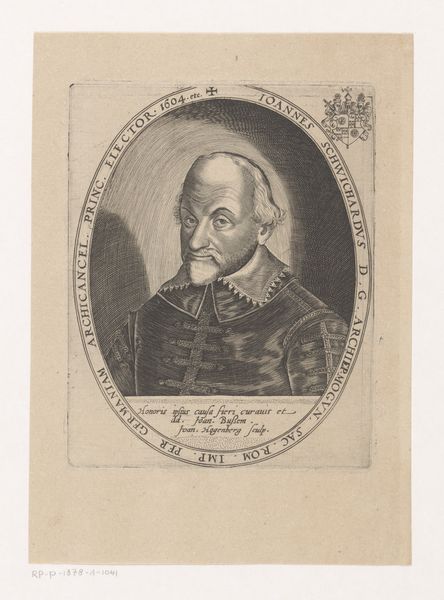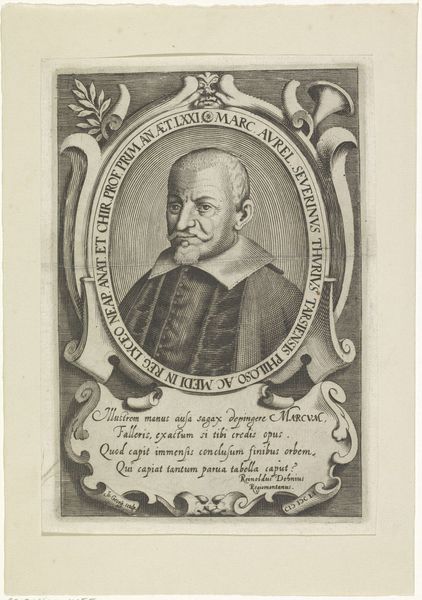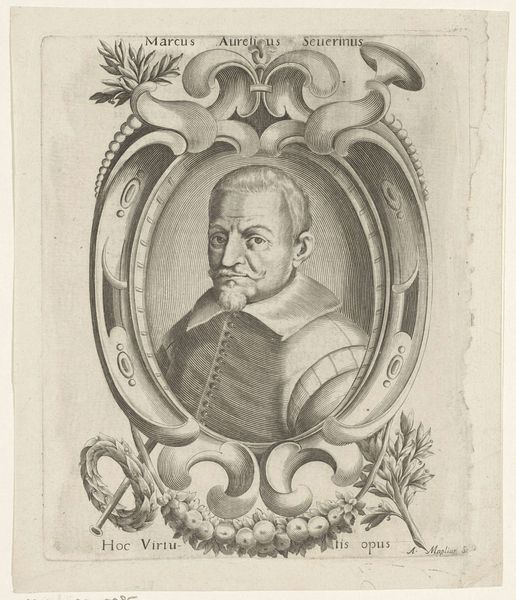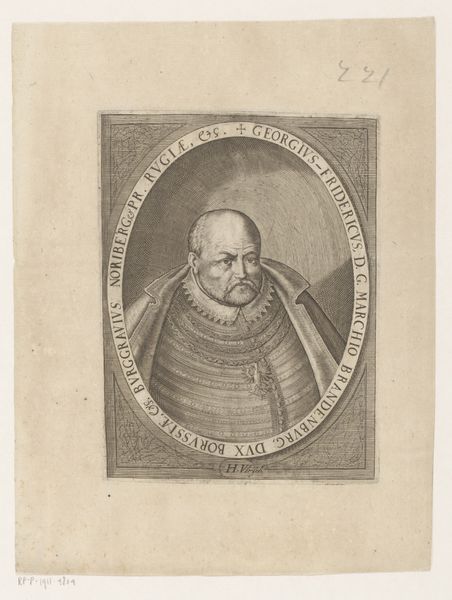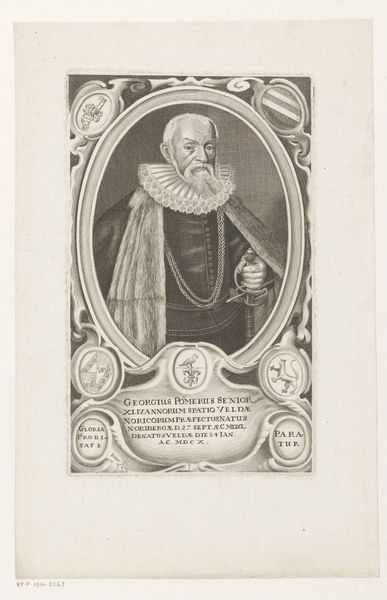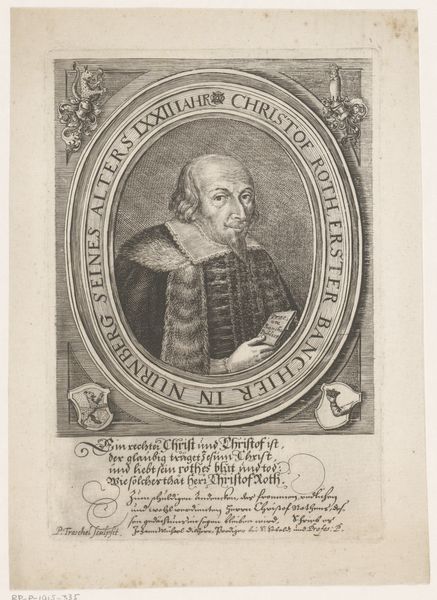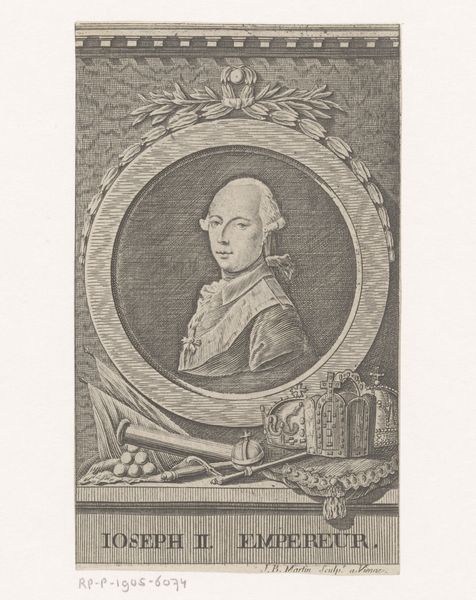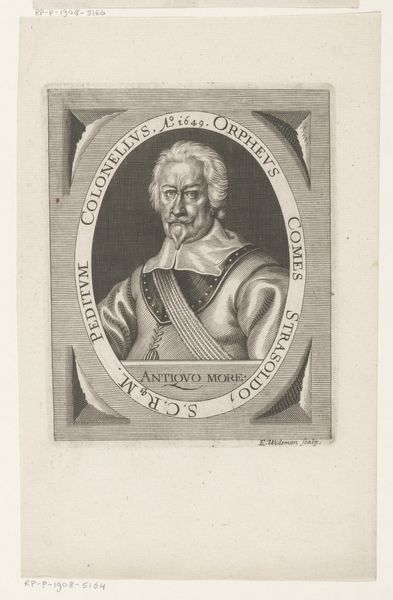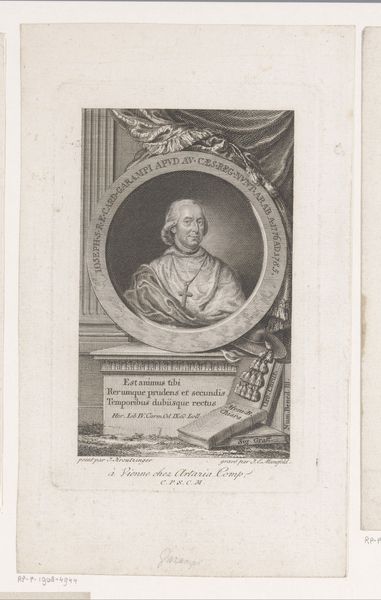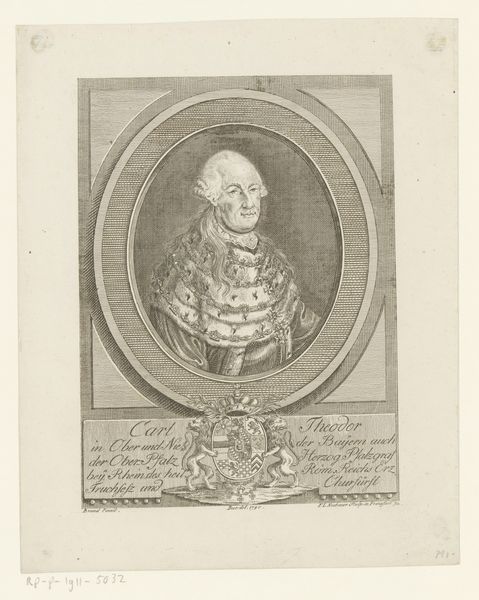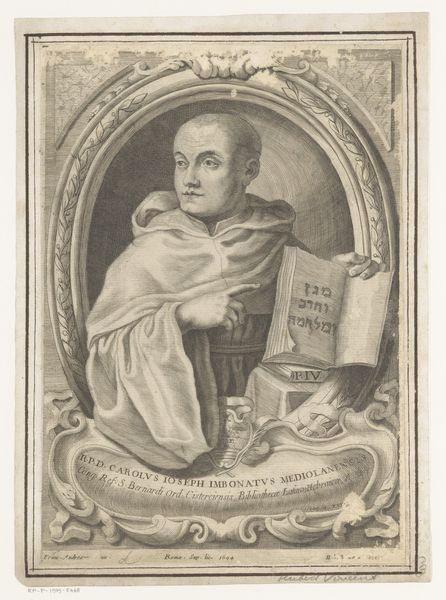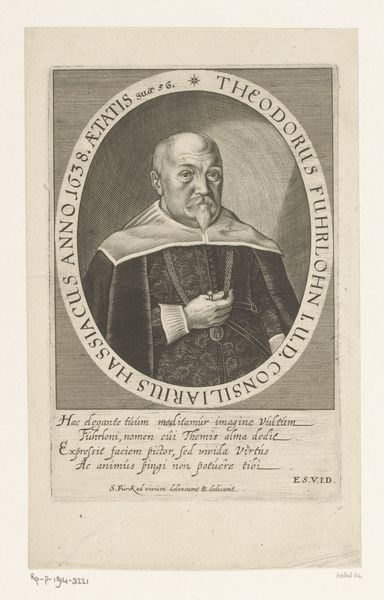
print, engraving
#
portrait
# print
#
old engraving style
#
caricature
#
mannerism
#
11_renaissance
#
engraving
Dimensions: height 173 mm, width 129 mm
Copyright: Rijks Museum: Open Domain
Editor: This is a print called "Portret van Orlando di Lasso" made in 1599 by Monogrammist AF. It’s an engraving, currently held at the Rijksmuseum. What strikes me is how elaborately framed the central portrait is, almost overwhelmed by decorative elements. What do you make of its composition? Curator: Indeed, the ornamental frame vies for attention. However, it’s essential to consider how this very frame underscores certain formal qualities. Notice how the artist utilizes the oval shape to create a sense of containment, directing the viewer’s eye toward the portrait itself. Semiotically, the angels act as visual support and guides while their vertical orientation contrasts with the oval framing of the main character to introduce a spatial dynamic and imbue depth to the overall scene. Do you perceive other visual tensions at play? Editor: The use of light and shadow seems very precise for an engraving, giving the figure a surprising volume. The artist clearly put a lot of thought into the balance of these values to really define his features and attire. I wonder if those angels might hint at more. Curator: Observe, the formal vocabulary here also embodies contemporary theory. The Mannerist style favors distortion and exaggeration and manifests in the overly elaborate framing which emphasizes the flatness of the engraving. Now, look closer: where do you see any tension between the flat and illusory spaces within the composition? Editor: I see, that the contrast between the detailed rendering of the face within the oval frame, which makes it seem three-dimensional, and the flatness of surrounding angels that almost look like decorative reliefs is quite jarring. That really does distort how we view it. I never noticed it before! Curator: Precisely. That interplay, between the portrait's depth and frame’s flatness creates visual interest and embodies the theoretical underpinnings of the period. Editor: Fascinating. So, even something seemingly decorative like the frame can reveal much about the artist’s intentions. Thanks for pointing this out! Curator: It has been a pleasure.
Comments
No comments
Be the first to comment and join the conversation on the ultimate creative platform.
